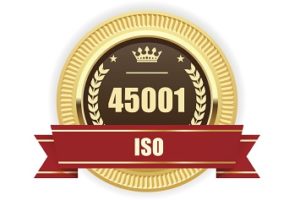Anticipating ISO 45001: OHS Management Systems Get a Global Upgrade
When you think about occupational health and safety (OHS), do you immediately think about regulatory compliance? Do you think about your lockout/tagout program or your most recent hazard communication training?
That has been the mind-set in many organizations, especially since the passage of the Occupational Safety and Health Act (OSH Act) of 1970 and the creation of the Occupational Safety and Health Administration (OSHA). But increasingly, government regulation may no longer be the driving force for OHS practice. Many organizations are moving instead to a management systems approach as a better way to manage overall organizational risk and achieve a measure of corporate social responsibility.
As a result, OHS management systems are about to get a global upgrade.
OHS Management Systems Go Global
Consensus standards for OHS management systems have been around for a while. The two most widely used are:
- American National Standards Institute (ANSI)/American Society of Safety Engineers (ASSE) Z10 standard, developed under the leadership of the ASSE and first issued in 2005; and
- Occupational Health and Safety Assessment Series (OHSAS) 18001, developed by the U.K.’s British Standards Institution (BSI) Group and first issued in 1999.
When they were first developed, those two standards were compatible with existing standards for environmental and quality management systems developed by the International Organization for Standardization ((ISO) 14001 and ISO 9001). However, beginning in 2012, the ISO undertook to harmonize much of the language and structure of its standards, using a new format that diverged from older, non-ISO standards. This project, called the “high-level structure” project, makes it easier for an organization to implement multiple ISO standards because, for example, leadership recommendations are always found in Clause 5 of a given ISO standard, and common definitions (for example, the definition of “organization” or “policy”) are the same across all standards. Both ISO 9001 and ISO 14001 were updated in 2015 and are aligned with ISO’s high-level structure.
In 2013, the ISO announced that it would begin developing its own OHS management systems standard, ISO 45001.
Advantages of ISO 45001
The new ISO 45001 standard is expected to be an improvement over existing standards because:
- It is designed to be easy to migrate from if you already have implemented an existing OHS management standard. Both the BSI and ASSE are actively involved in crafting the new standard and are encouraging organizations to migrate to the ISO standard once it is released.
- It will follow the same high-level structure as other ISO standards, including ISO 9001, ISO 14001, and ISO 50001 (energy management). In fact, ISO 45001 will share about 50% of its language with ISO 9001 and ISO 14001, making implementation relatively seamless for organizations that have already implemented one or both of those standards.
- It will enable OHS professionals to more fully integrate OHS management into an organization’s overall goals, objectives, and processes.

No comments:
Post a Comment